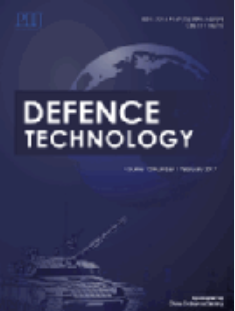Surface-covering water significantly amplifies the explosion impulse of shallow buried explosives
IF 5
Q1 ENGINEERING, MULTIDISCIPLINARY
引用次数: 0
Abstract
While the moisture content of soil affects significantly the blast impulse of shallow buried explosives, the role of surface-covering water (SCW) on soil in such blast impulse remains elusive. A combined experimental and numerical study has been carried out to characterize the effect of SCW on transferred impulse and loading magnitude of shallow buried explosives. Firstly, blast tests of shallow buried explosives were conducted, with and without the SCW, to quantitatively assess the blast loading impulse. Subsequently, finite element (FE) simulations were performed and validated against experimental measurement, with good agreement achieved. The validated FE model was then employed to predict the dynamic response of a fully-clamped metallic circular target, subjected to the explosive impact of shallow buried explosives with SCW, and explore the corresponding physical mechanisms. It was demonstrated that shallow buried explosives in saturated soil generate a greater impulse transferred towards the target relative to those in dry soil. The deformation displacement of the target plate is doubled. Increasing the height of SCW results in enhanced center peak deflection of the loaded target, accompanied by subsequent fall, due to the variation of deformation pattern of the loaded target from concentrated load to uniform load. Meanwhile, the presence of SCW increases the blast impulse transferred towards the target by three times. In addition, there exists a threshold value of the burial depth that maximizes the impact impulse. This threshold exhibits a strong sensitivity to SCW height, decreasing with increasing SCW height. An empirical formula for predicting threshold has been provided. Similar conclusions can be drawn for different explosive masses. The results provide technical guidance on blast loading intensity and its spatial distribution considering shallow buried explosives in coast-land battlefields, which can ultimately contribute to better protective designs.
覆盖地表的水显著地放大了浅埋炸药的爆炸脉冲
土壤含水率对浅埋炸药爆炸冲击有显著影响,但地表覆盖水在爆炸冲击中的作用尚不明确。采用实验与数值相结合的方法研究了水泥浆对浅埋炸药传递冲量和载荷大小的影响。首先,对浅埋炸药进行了带和不带SCW的爆炸试验,定量评估了爆炸载荷冲击。随后进行了有限元模拟,并与实验测量结果进行了验证,结果吻合较好。利用验证后的有限元模型,预测了全夹持金属圆形靶在浅埋炸药含水炸药爆炸作用下的动态响应,并探讨了相应的物理机制。结果表明,浅埋炸药在饱和土中比在干土中产生更大的向目标传递的脉冲。靶板的变形位移增大一倍。随着水吊杆高度的增加,加载目标的中心峰值挠度增大并随之下降,这是由于加载目标的变形模式由集中荷载向均匀荷载发生了变化。同时,尾流的存在使传递给目标的爆炸脉冲增加了3倍。此外,存在一个使冲击脉冲最大的埋深阈值。该阈值对水势高度敏感,随水势高度的增加而降低。给出了预测阈值的经验公式。对于不同的爆炸质量,可以得出类似的结论。研究结果为岸陆战场中考虑浅埋炸药的爆炸载荷强度及其空间分布提供了技术指导,最终有助于更好的防护设计。
本文章由计算机程序翻译,如有差异,请以英文原文为准。
求助全文
约1分钟内获得全文
求助全文
来源期刊

Defence Technology(防务技术)
Mechanical Engineering, Control and Systems Engineering, Industrial and Manufacturing Engineering
CiteScore
8.70
自引率
0.00%
发文量
728
审稿时长
25 days
期刊介绍:
Defence Technology, a peer reviewed journal, is published monthly and aims to become the best international academic exchange platform for the research related to defence technology. It publishes original research papers having direct bearing on defence, with a balanced coverage on analytical, experimental, numerical simulation and applied investigations. It covers various disciplines of science, technology and engineering.
 求助内容:
求助内容: 应助结果提醒方式:
应助结果提醒方式:


